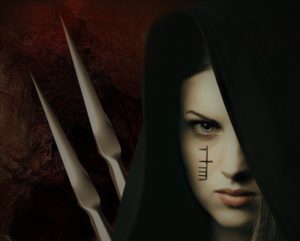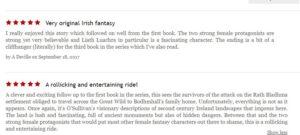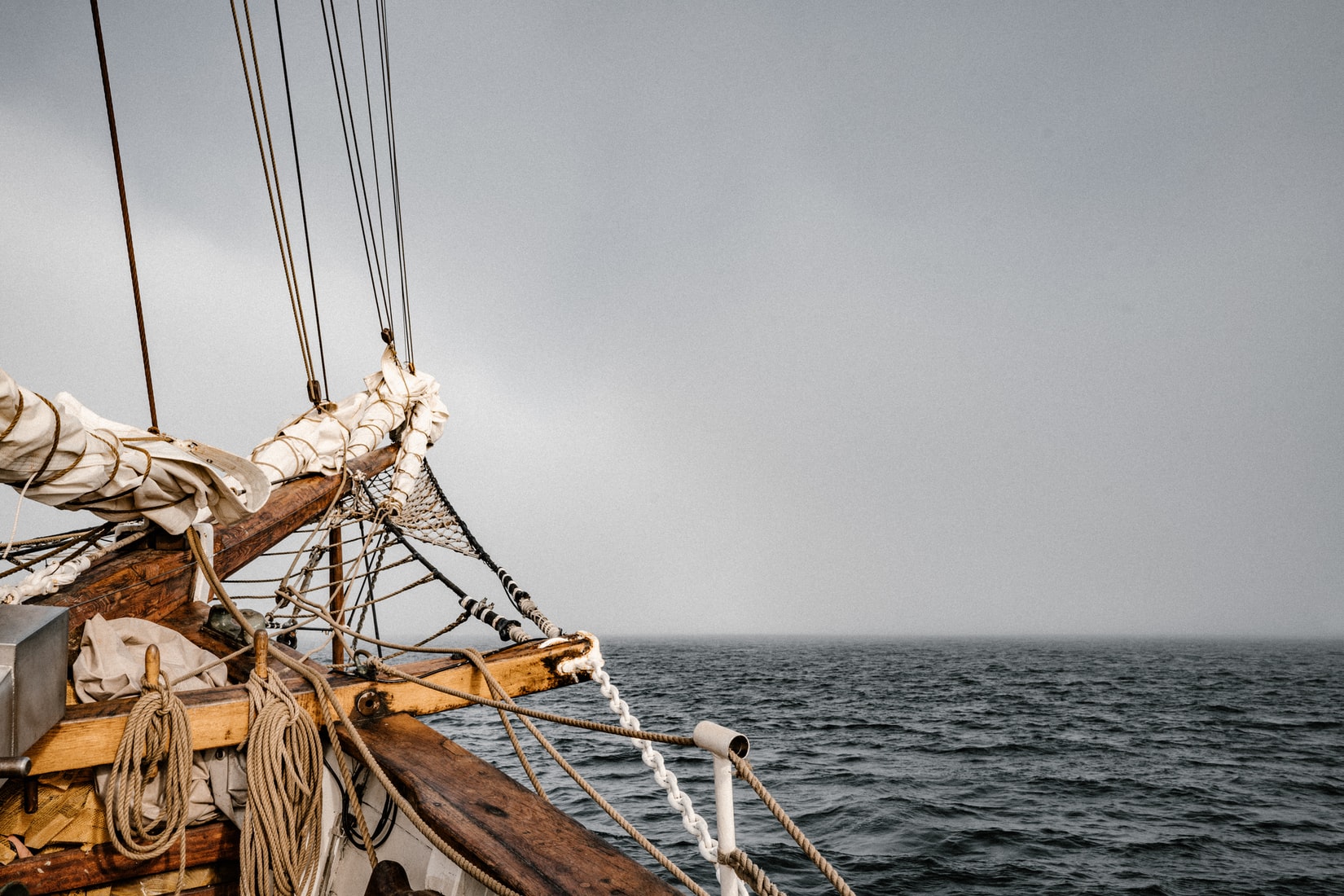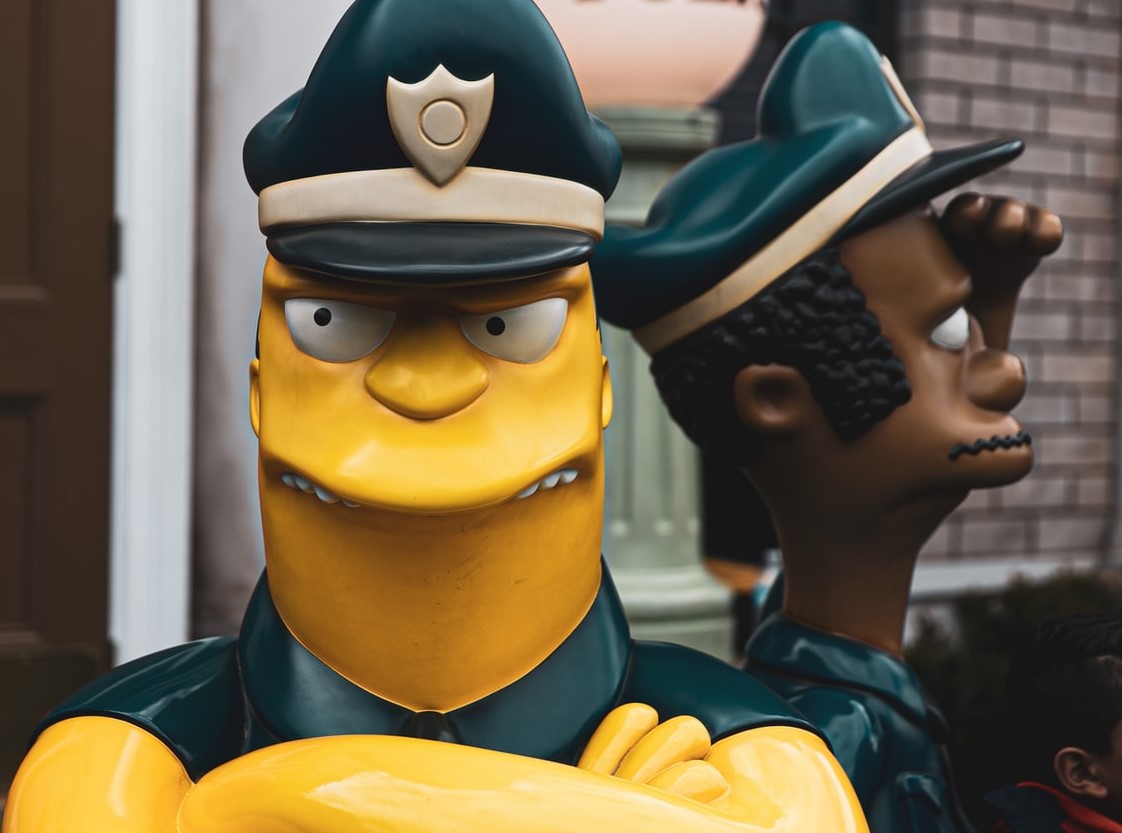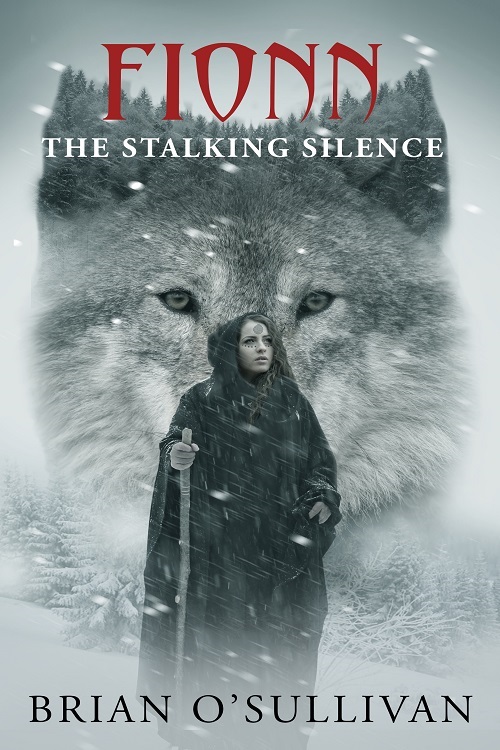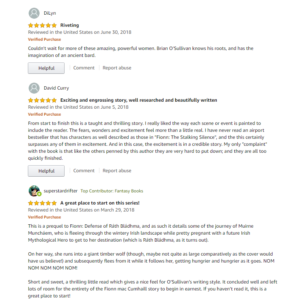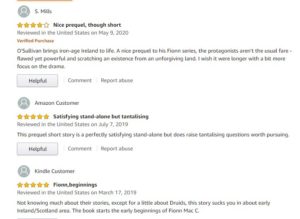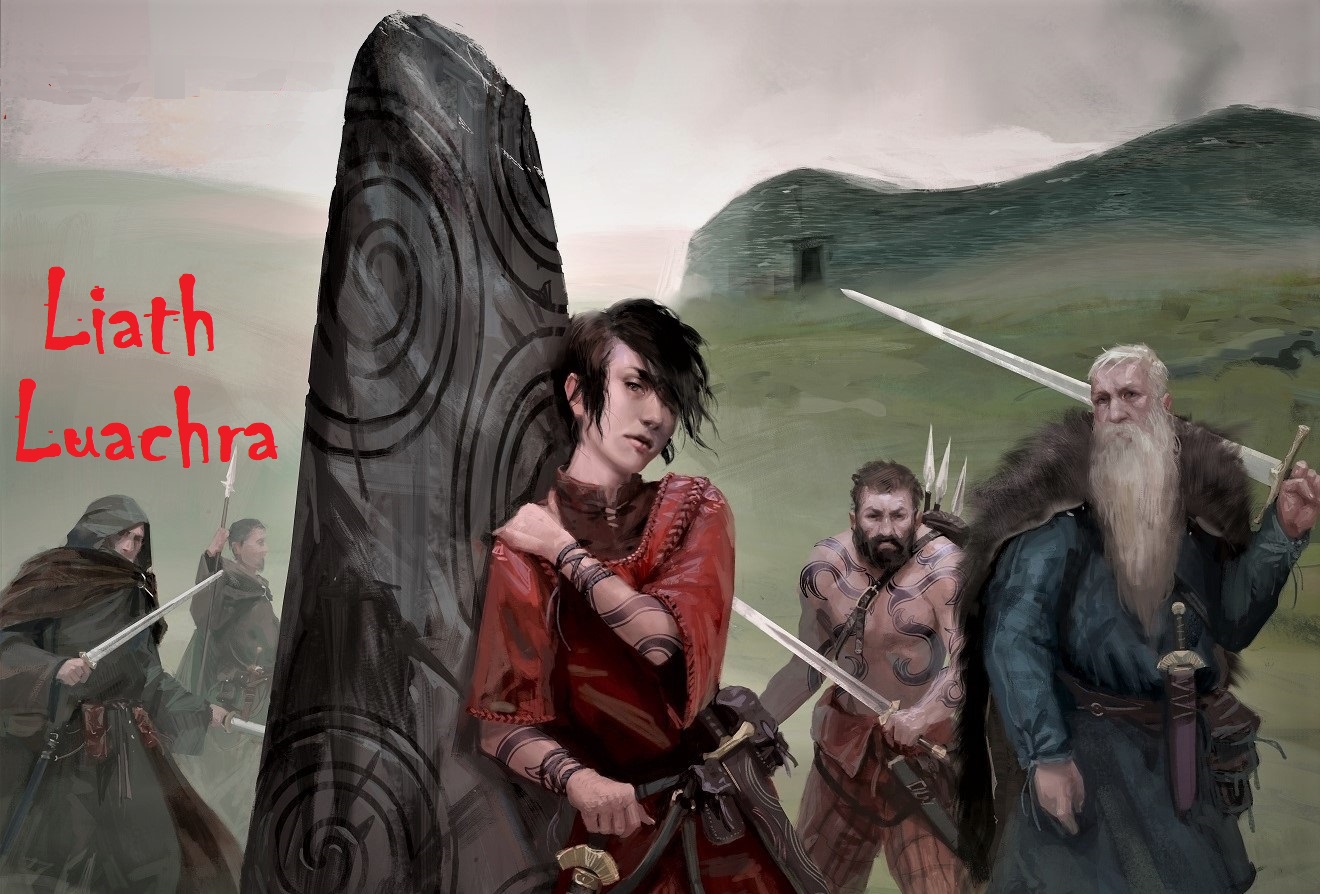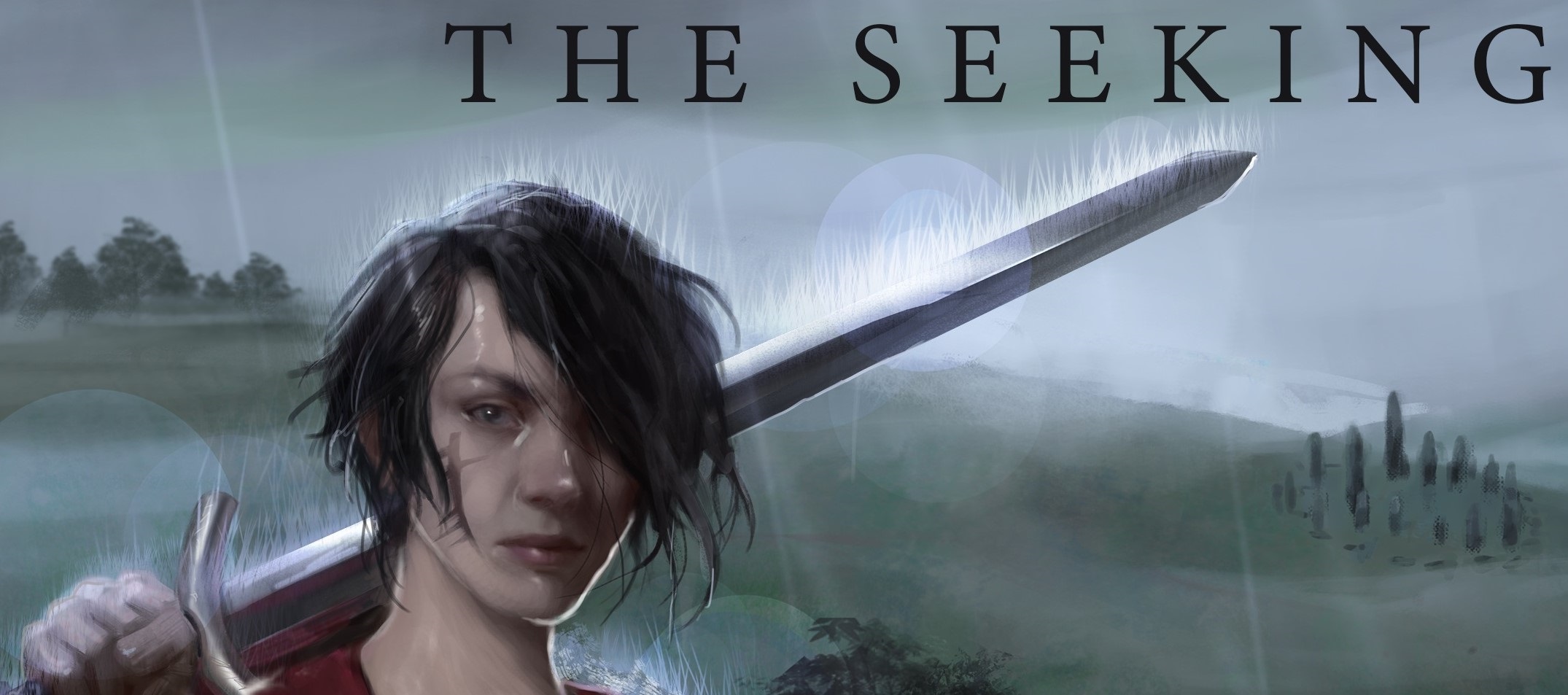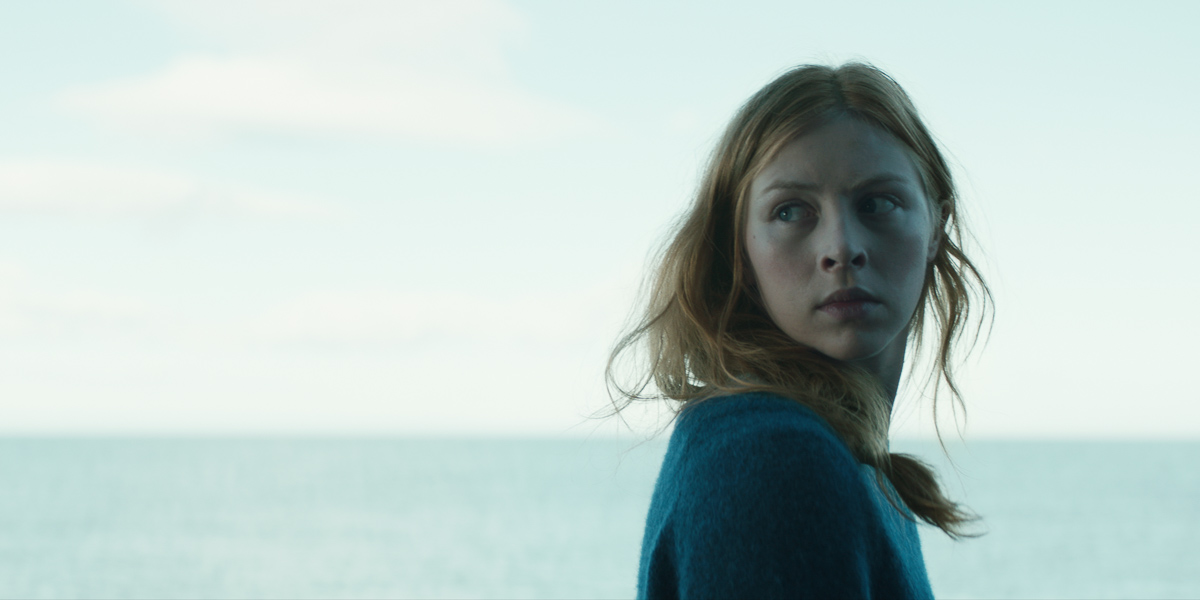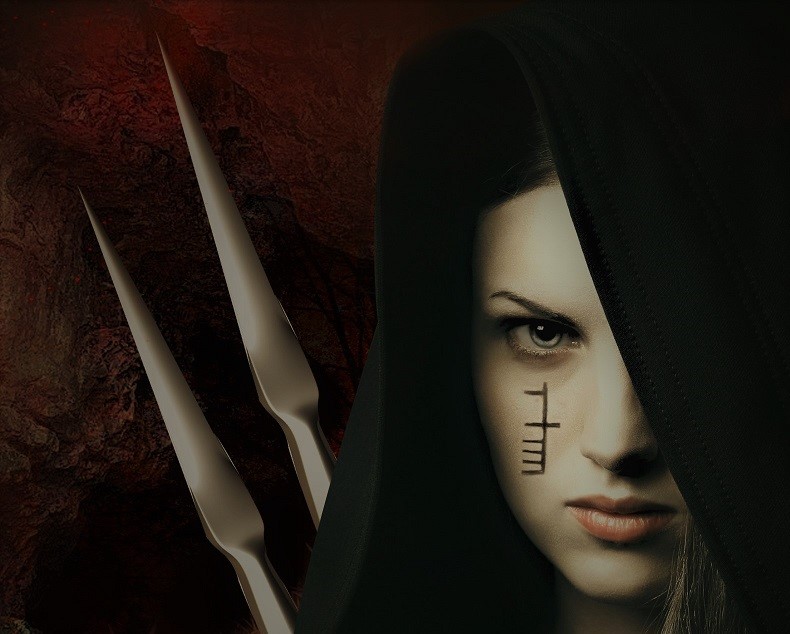
An excerpt from Fionn: Defence of Ráth Bládhma. While out hunting, the woman warrior Liath Luachra and her young companion Bearach have discovered tracks of a large war party in the snow. Concerned that the war party might discover their trail and follow them back to the settlement of Ráth Bládhma, they elect instead to spend the night in a nearby cave. ******************
By the time they’d climbed to the cleft on the hill crest, the sky was beginning to darken, the light turning brittle and grey. The wind had also increased, whipping icy gusts down from the summit to spatter their eyes and faces
‘There it is!’
Liath Luachra pointed towards a narrow slit in the side of a steep incline, just above the tree line. Pleased to find it exactly where she’d remembered, she approached the craggy cave mouth. It seemed a bit narrower than she recalled but it was definitely the place.
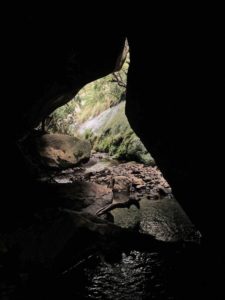
A rocky passage curled inwards from the entrance for a distance of about seven or eight paces before veering off sharply to the left. Here it widened to form a circular chamber with a high curved ceiling. In one wall, there was a wide ledge at the height of a tall man’s head. Accessible using a rough series of hollows and notches that pockmarked the rocky surface, it provided a secure place to sleep.
Liath Luachra dumped an armful of kindling and branches onto the floor then left Bearach to coax a fire to life while she went outside and down to the trees to seek additional fuel. After returning several times with armfuls of the driest wood she could find, she hacked a number of branches from a nearby gorse bush and used them to plug the entrance to the cave. As a barrier, the spiny shrub did not present a serious obstacle, however its voluminous branches would serve as a credible windbreak to prevent the worst of the gale from entering the cave. More importantly, they would also help to shield any light from the fire that might seep out from the inner chamber.
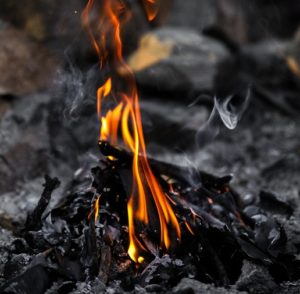
When the gap was sealed to her satisfaction, Liath Luachra joined the youth, sitting by the small fire he’d managed to put together. Bearach had also laid their rations out on a flat rock beside the fire; two portions of salted fish, blood cake and some hard bread, all wrapped in broad, green dock leaves.
They ate the frugal meal in silence, the woman warrior chewing without relish on the tasteless hard tack. It was hardly a feast but it was certainly not the worst she’d eaten. With her habitual pragmatism, she accepted the food for what it was; simple replenishment to keep the hunger pangs at bay.
Beside her, somewhat more forthright, Bearach sighed and grimaced melodramatically with each mouthful.
‘Some roasted meat would have been nice.’
Liath Luachra gave him a sidewards glance, one eyebrow raised.
‘You’re as bad as your brother.’
‘But Aodhán has a point. He likes his meat. This is like chewing dog turds. I wish we’d brought some decent food with us.’
Liath Luachra rewarded his opinion with a look of disdain. Tossing the empty dock leaves aside, she slowly got to her feet and then twisted her hips so that she could slip her right hand down the back of her woolen leggings. Bearach watched in growing bewilderment as she grunted loudly, forehead creased as though in immense concentration.
‘What are you doing?’
‘Be quiet. I’m trying to pull some nice fresh venison out of my arse for your dinner.’
He stared at her blankly then suddenly his head rolled back and a raucous guffaw echoed around the cave, resounding off the hard chamber walls to fill the enclosed space with laughter. Infected by his contagious good humour, Liath Luachra started to laugh as well and, for a moment, a great weight slipped from her shoulders.
When they’d finished eating the last scraps of food, Bearach climbed up to the rocky shelf to unroll their bedding; two double-layered wool blankets. He spread these out across a cushion of spruce cuttings that he’d trampled flat on the rock base and strewn with dead leaves bundled up from the cavern floor.
Liath Luachra regarded the sleeping arrangements with little enthusiasm.
Hard dreams tonight, then.
‘You go ahead and sleep,’ she instructed the boy. ‘I want to think and I need to be alone to work out the way of things. I’ll come join you when I’m ready.’
Shrugging, Bearach retired to his bedroll and lay down, fully clothed, on the thin bedding. They would have no covering layer tonight, relying on their shared body heat, the fire and the shelter of the cave to keep them warm until morning.
Exhausted from the day’s exertions, it did not take the boy long to fade and within a short period of time, a soft snore emanated from the huddle he made.
Liath Luachra remained seated before the small fire, adding some dry sticks then rubbing her palms together before the brief flare of heat they produced. Outside, the temperature would have plummeted but it was still pleasantly warm within the cave, the rocky walls reflecting the heat of the fire back on her. Later in the night, when the fire had died down, the accumulated heat would slowly seep out through the cave entrance, despite her best efforts to seal them in.
She glanced back over her shoulder and up to the ledge where Bearach was visible, sleeping quietly. She released a long sigh. Originally intending to travel alone, she’d allowed the boy to beat her resistance down with his good humour and boundless enthusiasm, somehow convincing her to let him come. She was still unsure how he’d actually managed to do that, to weasel his way past her habitual resolve.
The fire crackled and a low draught stirred the scent of burning pine up to her nostrils.
She had never been particularly good with children, unable to relate to their weakness, their innocence and complete dependency on adults. Her own childhood had taught her that there were only two types of people: those who were tough enough to survive and those who died. It was a simple as that.
And yet it wasn’t, of course.
Three years at Ráth Bládhma had changed her beliefs on many things. Somehow, over that time, the routine domesticity and Bodhmhall’s calming influence had mellowed her, worn down her more jagged edges. Until accompanying Bodhmhall to Ráth Bládhma she had never really known such an extended period of calm, of tranquility. In the new settlement, for the first time in her life, she was surrounded by people she actually liked, people who respected her presence there as much for her company as for her martial skills.
You are getting soft, Liath Luachra. Life at Ráth Bládhma has made you soft and fat.
Sometimes she wished she could cut old memories from her mind, peel them away in the same way she’d peel the skin from a potato. If such things were possible she would have pared away all the pain, all the memories, long ago and tossed them into the air to let the wind take them away.
She chuckled at her own inanities. She was only fooling herself. The pain made her who she was. The pain made her hard and ruthless and, sometimes, ruthlessness was necessary to combat those who threatened you.
And there was always someone who would threaten you.
